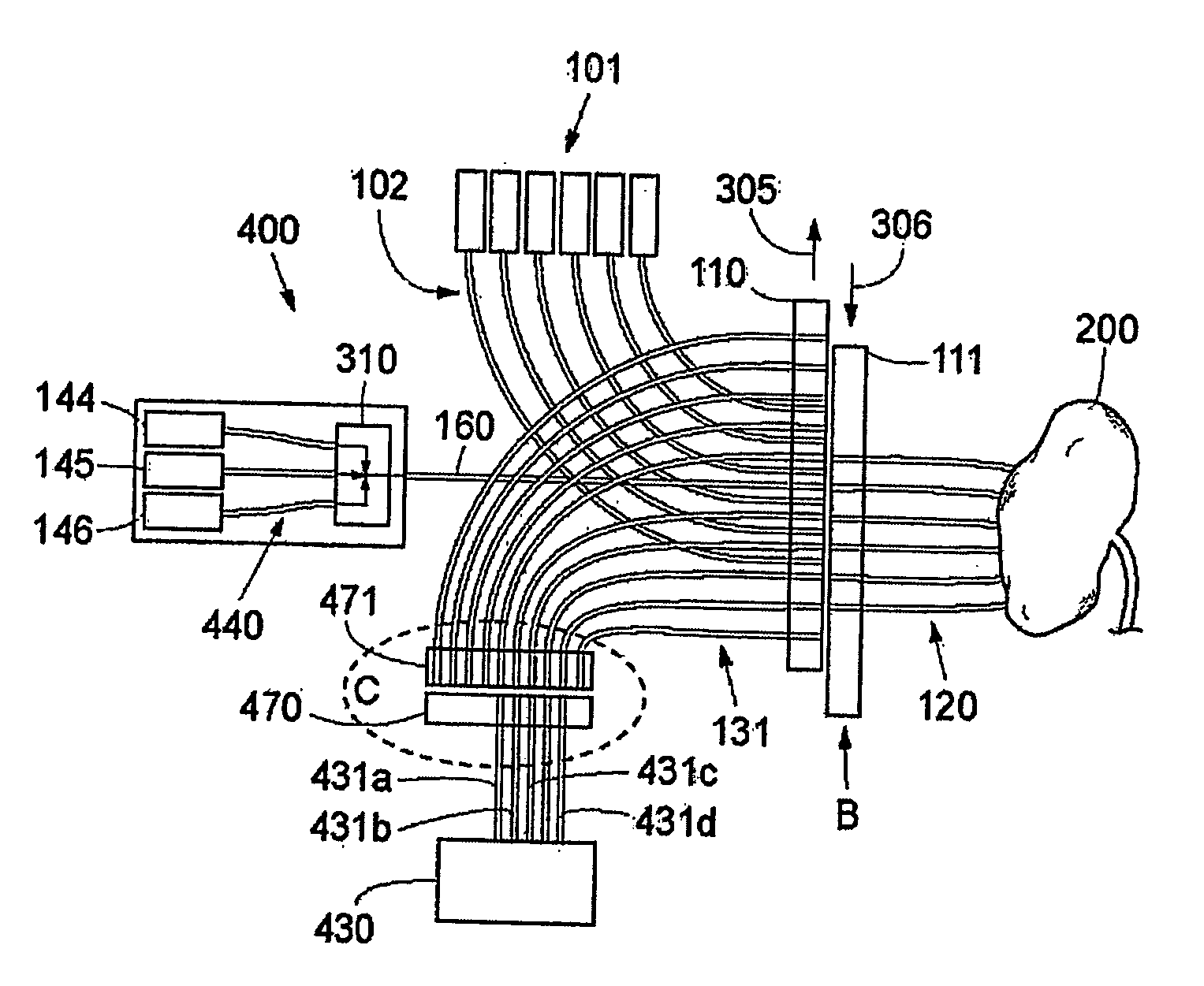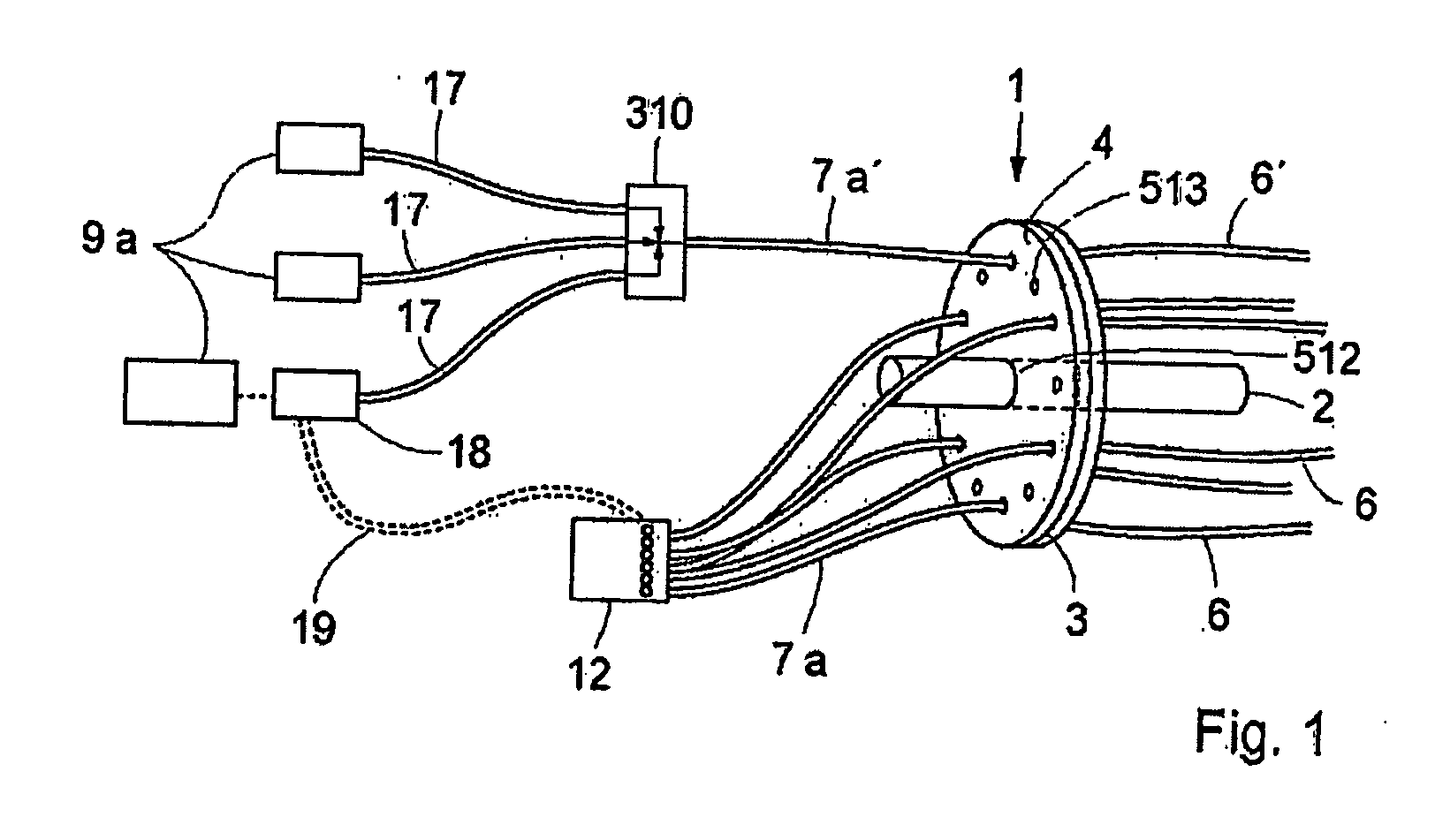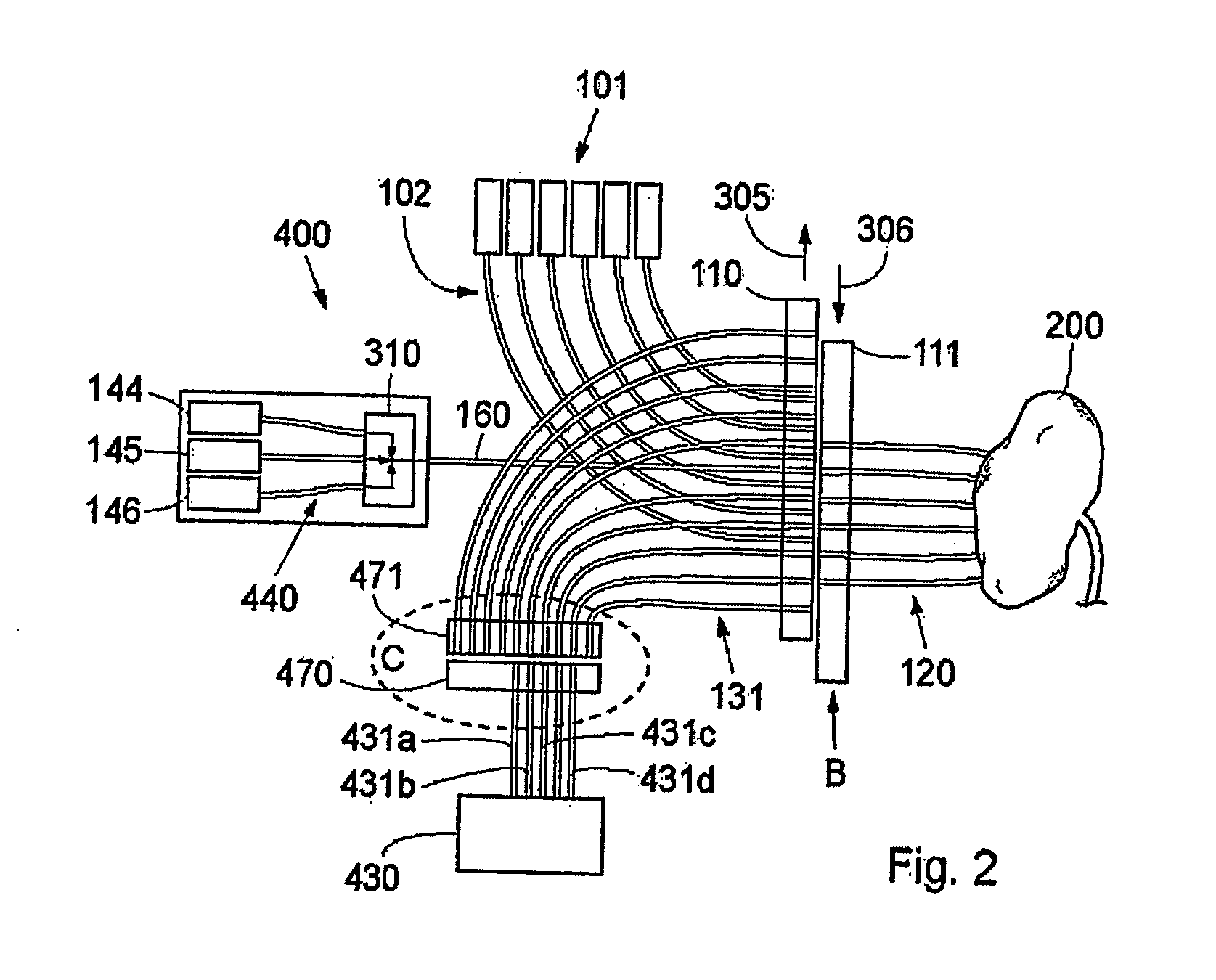System and method for therapy and diagnosis comprising in combination non-mechanical and mechanical distributors for distribution of radiation
a radiation distribution system and system technology, applied in the field of system and method for tumour therapy and diagnosis, can solve the problems of limited penetration of activating radiation into the tissue of the activated tissue, high percentage of deaths in western countries, and high radiation parameters. , the effect of compact system structure and excellent radiation parameters
- Summary
- Abstract
- Description
- Claims
- Application Information
AI Technical Summary
Benefits of technology
Problems solved by technology
Method used
Image
Examples
Embodiment Construction
[0025] Different embodiments of the system according to the invention are now described with reference to the drawings. In order to simplify the description of the embodiments, reference numerals for similar elements shown in the drawings are not repeated throughout all the figures.
[0026]FIG. 1 is a schematic view illustrating an embodiment of the invention, wherein a rotary radiation distributor 1 comprises two flat and in proximity lying discs 3,4 made of, e.g., 1 cm thick material such as steel, aluminium / titanium / magnesium, a composite material etc. When composite material is used, this may reduce the thickness to some mm, depending on different parameters, such as the way of fastening the radiation conductors to the distributor. When a contact element, such as conventional optical fibre couplings are used for fixing the radiation conductors to the distributor, these couplings ensure the mechanical stability and define the size of the distributor elements. In case the radiation...
PUM
 Login to View More
Login to View More Abstract
Description
Claims
Application Information
 Login to View More
Login to View More - R&D
- Intellectual Property
- Life Sciences
- Materials
- Tech Scout
- Unparalleled Data Quality
- Higher Quality Content
- 60% Fewer Hallucinations
Browse by: Latest US Patents, China's latest patents, Technical Efficacy Thesaurus, Application Domain, Technology Topic, Popular Technical Reports.
© 2025 PatSnap. All rights reserved.Legal|Privacy policy|Modern Slavery Act Transparency Statement|Sitemap|About US| Contact US: help@patsnap.com



